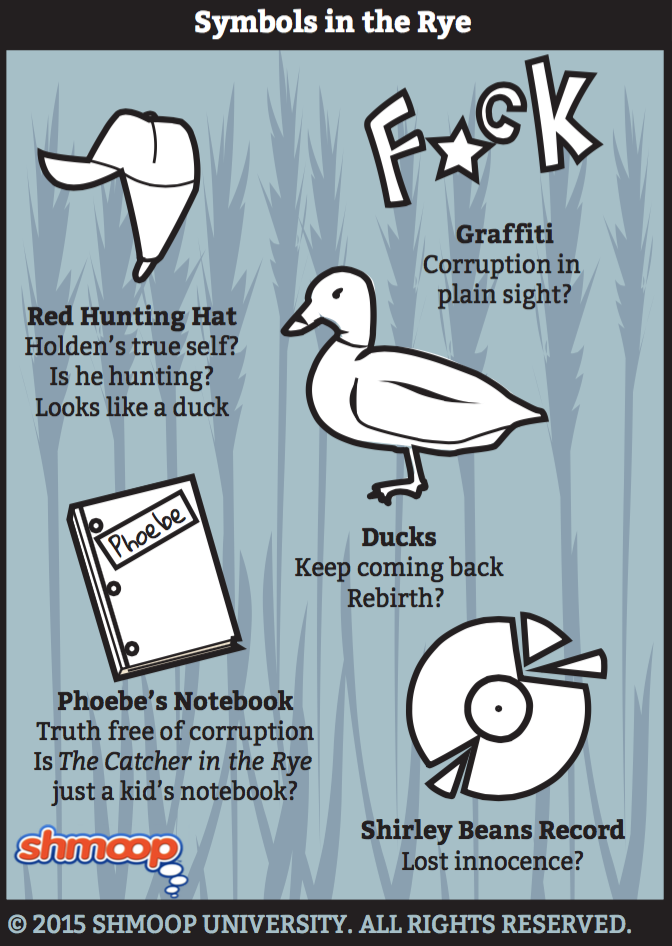Symbolism, Imagery, Allegory

(Click the symbolism infographic to download.)
Holden digresses in Chapter Twenty-Two about James Castle, a classmate of his who killed himself at Elkton Hills. On the surface, this is another instance where death has come close to Holden—he hears the body hit the ground, he sees the "teeth and blood" all over the place afterwards, and the boy is wearing Holden's turtleneck sweater at the time (22.30).
But then there’s the Mr. Antolini connection. Salinger helps us out by making it really explicit—Mr. Antolini carries the body away. And then, during his conversation with/lecture to Holden, Mr. Antolini makes a big deal (he even writes down a favorite quotation) out of warning his former student not to die nobly for an unworthy cause. Check out the passage where Holden explains his death. It seems that James insulted a (conceited) guy by calling him conceited
So Stabile, with about six other dirty bastards, went down to James Castle's room and went in and locked the goddam door and tried to make him take back what he said, but he wouldn't do it. So they started in on him. I won't even tell you what they did to him—it's too repulsive—but he still wouldn't take it back, old James Castle. And you should've seen him. He was a skinny little weak-looking guy, with wrists about as big as pencils. Finally, what he did, instead of taking back what he said, he jumped out the window. (22.30)
Sounds like he died nobly for an unworthy cause—exactly what Mr. Antolini wants Holden not to do. But we have to ask—is this really an unworthy cause, in Holden’s eyes? After all, James Castle is being true to himself in the only way he knows how. Notice that Holden emphasizes that the guy is weak and little; he has no chance of physically standing up to the bullies. Rather than be “phony” by taking back the insult, he jumps.
To Holden, this might sound a lot more like a noble cause than an unnoble one.